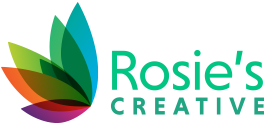
Good Typography is Invisible: How Designers Work With Type

Typography Design Requires Bold Choices Which Evoke Emotion and Convey Character
When creating a logo or deciding on a new color scheme for a brand, designers make bold use of visual elements to evoke emotion and convey character. It’s these facets of graphic and web design that are probably the first that come to mind when you enlist the services of a designer to boost your brand’s appeal. But not all uses of a designer’s skillset are so high-impact.
Typography and page layout may not be the most glamorous aspects of graphic design, but they’re no less critical to getting your brand message out there. And it’s no accident that a designer’s treatment of type likely isn’t the first thing you notice.
When it comes to styling written content, designers are guided by an oft-cited principle – “good typography is invisible.” What this means is that a designer’s top priority must be to ensure that the reader’s focus is on the content, and any distraction caused by the visual styling or arrangement of that content is unwelcome.
Two key concepts that inform designers’ work with type are legibility and readability. While these words are somewhat interchangeable in common usage, for designers, they are specific terms with distinct meanings.
Legibility
Refers to the readers’ ease in distinguishing letters from one another and quickly recognizing words. It’s affected by the style, size, and weight of the typeface used. To maximize legibility, designers limit their use of bold, condensed, and slanted typefaces, and avoid the use of all caps whenever possible.
Readability
Refers to the readers’ ease in navigating lengthy passages of text. Again, typeface selection has a major impact on readability, as do factors such as line height, line length, and letter spacing. When designing for the digital space, designers must take care to ensure that text reads smoothly on screens of different sizes.
Another concept that factors into the design process is the need to establish a clear hierarchy of information. This takes on added significance when designing for the web, as readers are more likely to scan a page for relevant information, rather than read through in a linear fashion. To reinforce hierarchy, designers can use a different typeface for section headers, or utilize different sizes and weights of the same typeface to call out important information within a block of text.
So, when you think of ways that good design can impact your brand’s outreach efforts, just remember – design doesn’t end where the text begins.
Interested in learning more about how your digital or print marketing efforts can benefit from a designer’s touch? Contact us at Rosie’s Creative today.
